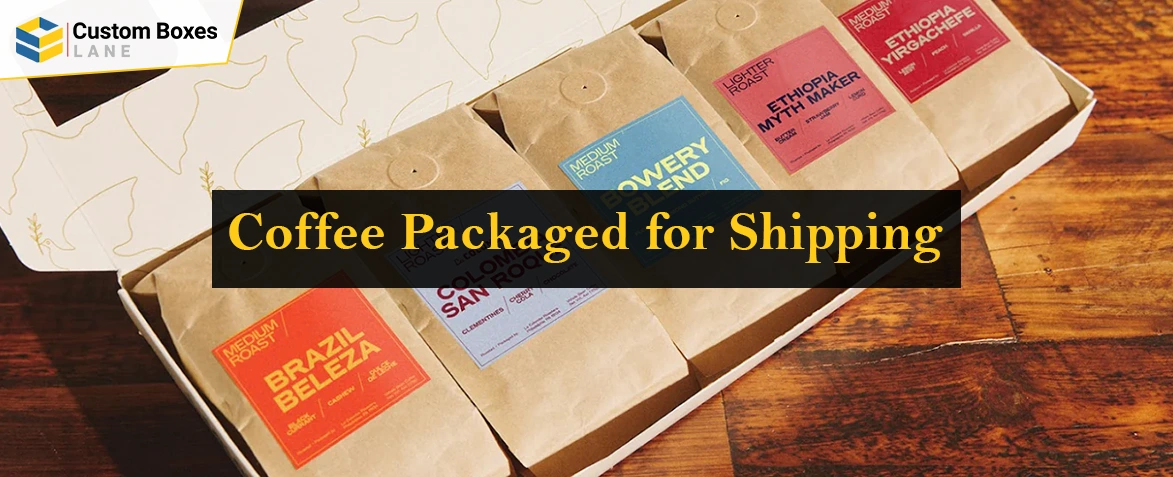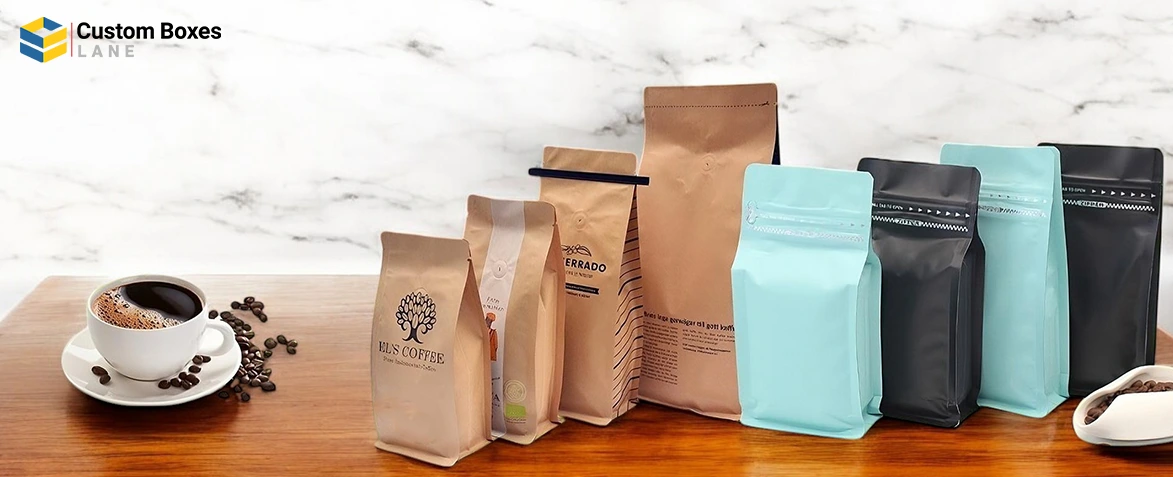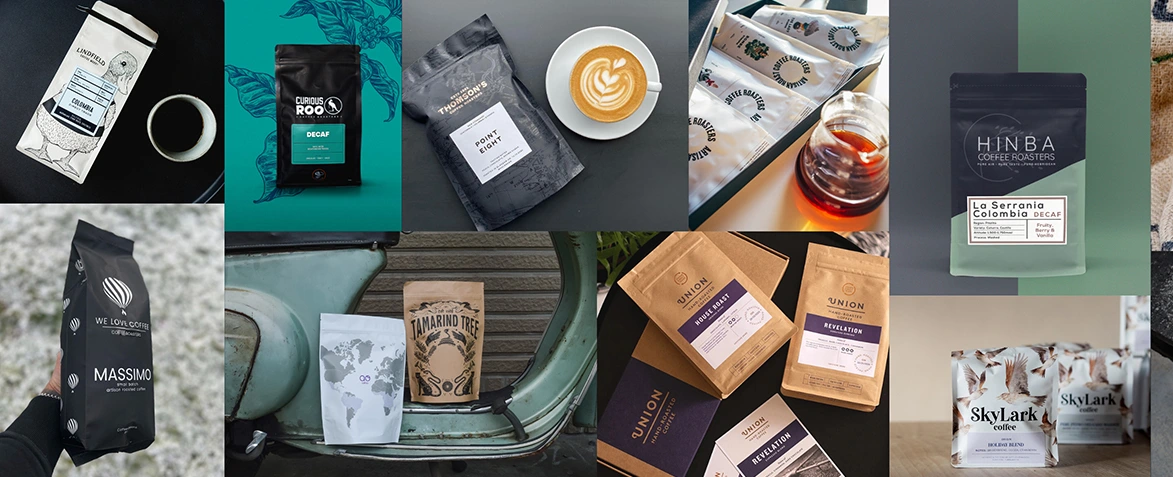Learn How is Coffee Packaged for Shipping in this Blog!
2025-03-06 07:24:50

There’s nothing that can ever replace a cup of coffee. If you also love drinking coffee, you might have wondered how your favorite coffee reaches you. Put simply, coffee packaging relies on a bag or carton that keeps coffee beans fresh.
Sturdy packaging helps to keep beans fresher for longer, allowing customers to experience coffee in the right way.
If you are interested to learn about coffee packaging in detail, you are at the right place. Read on to learn how coffee is packaged and what factors influence decisions about coffee packaging!
Why is Coffee Packaging Important?
Coffee is a delicate food item that can easily get spoiled if not packaged properly. By coming in contact with water, air, or sunlight, coffee beans or grounded coffee can easily lose its taste and aroma. Ensuring that coffee stays fresh till it is shipped to a customer’s kitchen cabinet is a daunting task.
As coffee is a food item that is consumed by virtually all households, it is important to curb the environmental impact of coffee packaging too. And businesses also have to follow legal regulations when choosing proper coffee packaging.
All these challenges add up to make coffee packaging an important operation for businesses.
How to Properly Pack Coffee for Shipping?

Extra measures need to be taken in coffee packaging to ensure the safe transit of coffee products. Here are some things brands consider while choosing coffee packaging
- Choosing the right materials
- Following legal guidelines
- Improving unboxing experience
- Making coffee shelf-friendly
- Persuading the customers
- Meeting sustainability goals
- Reducing the packaging costs
Most brands also look their geographical data in mind when making coffee packaging decisions. For example, in climates where the moisture levels in air are low, coffee can be stored in paper bags for a short period of time.
But relying on plastic-based packaging options is the only solution in places where humidity levels are high and light can also spoil coffee beans.
Other than geographical restraints, coffee businesses also weigh the branding efforts of their competitors to ensure their coffee packaging is persuasive for the customers.
Materials Used for Coffee Packaging

The first thing which comes into mind while thinking of a safe and food grade coffee packaging is the material. The material is in the direct contact of the coffee beans. Choosing the right material plays a major role in keeping the coffee fresh until it’s delivered at the customers doorstep. Food safe packaging materials mostly used to pack coffee the right way are:
-
Kraft
Kraft indeed is an ideal material choice to pack the coffee products. Being a highly recycled and reusable material, kraft effectively provides a sustainable packaging solution, in addition to offering top notch food safe coffee shipping.
-
PLA (corn polymer)
PLA lined paper bags have high tensile strength, so they offer flexible and sturdy packaging. These coffee packaging bags also ensure an eco-friendly mode of packaging as they are highly recyclable and biodegradable.
-
Aluminum
Aluminum is another important material used for coffee packaging. This material offers a lot of advantages and ships the coffee securely from one place to another. Aluminum is considered a sustainable material because of its recyclability, and it can be reused multiple times without losing quality.
-
Mylar
Mylar is a highly food grade material, which offers safe packaging to diverse food items like coffee. Mylar bags are airtight and highly water-proof, moisture-resistant, and tear-resistant. These features keep coffee fresh for longer periods of time.
6 Common Types of Coffee Packaging

Coffee packaging options vary for different coffee types. Roasted coffee, instant coffee, and other coffee types have differing packaging needs. Here is an overview of coffee packaging options that are commonly used:
-
Valve Sealed Bags
Valve sealed bags are highly airtight packaging bags. It means that these bags allow the gases from inside the bag to escape, while not letting any gas enter the bag from outside. These packaging bags are highly food safe and keep the stored coffee beans safe in the finest and fresh quality. This is why valve sealed bags are highly preferred and recommended to deliver the coffee products in the best quality.
-
Vacuum Sealed Bags
Vacuum sealed bags are commonly used to pack and store whole beans or freshly ground coffee beans. However, these bags are not very feasible for coffee packaging because these bags have an ineffective degassing method, which spoils the coffee as a result.
-
Vacuumized Sealed Jars
These are highly air tight coffee containers, which are mainly used to pack instant coffee products. The good thing about these jars is that they make it easier for customers to make coffee whenever they like. And vacuum jars also look amazing on shelves.
-
Flat Bottom Bags
Coffee is mostly packed in flat bottom bags to transport it for shipping. This packaging type is the most common and popular form of coffee packaging you will see. Flat bottom bags are super easy to stack and can be recycled too.
-
Standup Bags
These coffee storing bags are easy to place anywhere on retail shelves or in the kitchen cabinet. These bags occupy less space, so make the coffee shipping easier.
-
Pod Coffee Packaging
Pod coffee packaging, as the name suggests, is used to pack pods, also known as ground coffee. This special coffee packaging exclusively packs each pod individually, highly keeping each pod fresh and flavorful.
Challenges to Ship Coffee Products
As coffee can easily get spoiled from environmental factors, shipping coffee products is always challenging. Here are the common problems coffee businesses face when it comes to shipping their products:
- Finding cost effective shipping solutions
- Retain the freshness and quality
- Choosing environment-friendly packaging options
Conclusion
Choosing the best coffee packaging is not always an easy task as explained above. Brands need to take a lot of factors into consideration to ensure that coffee packaging meets all the standards and customers like their experience too.
Shoot us your packaging requirements and we will send a free quote to you to help you meet your needs.

